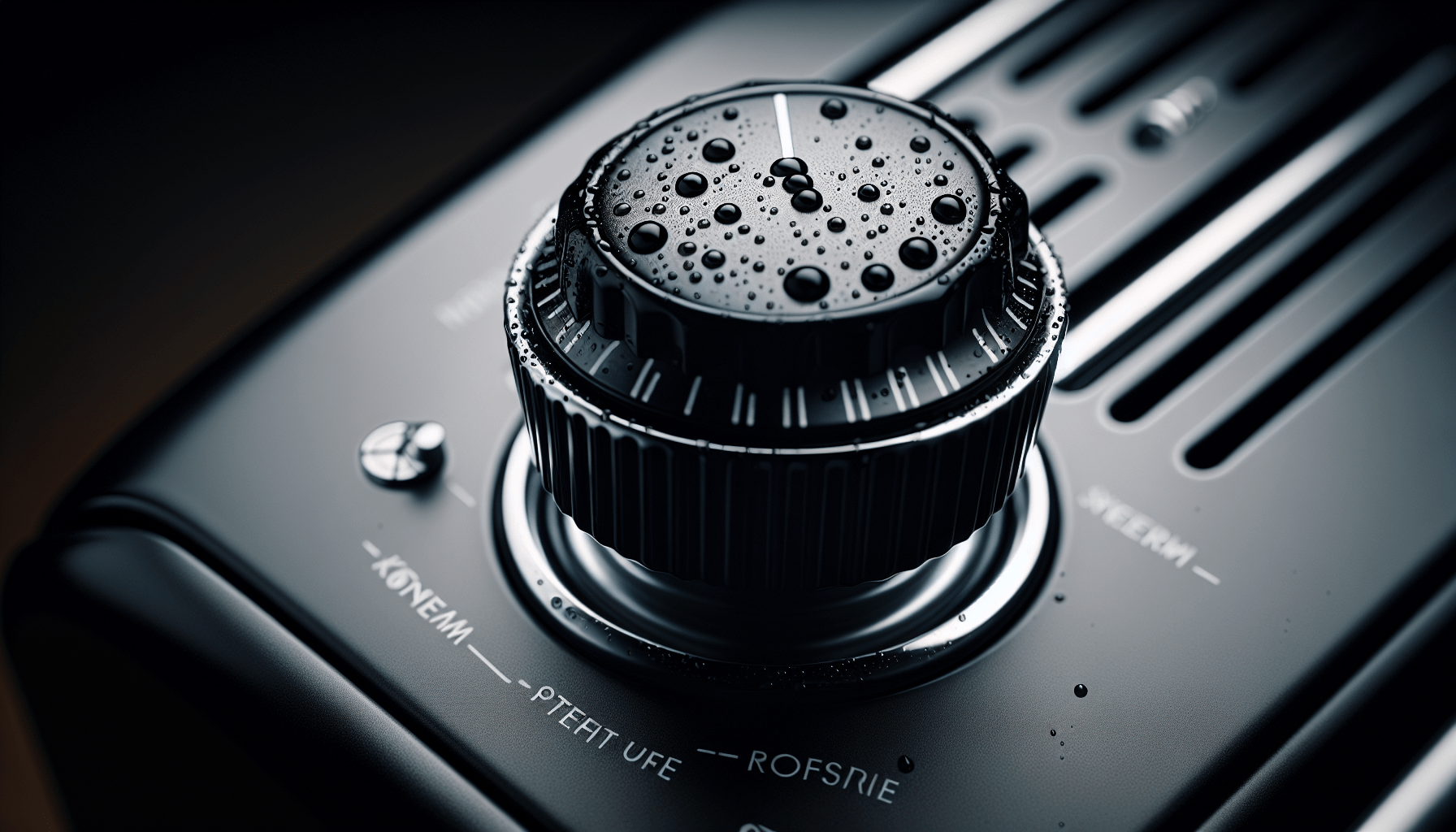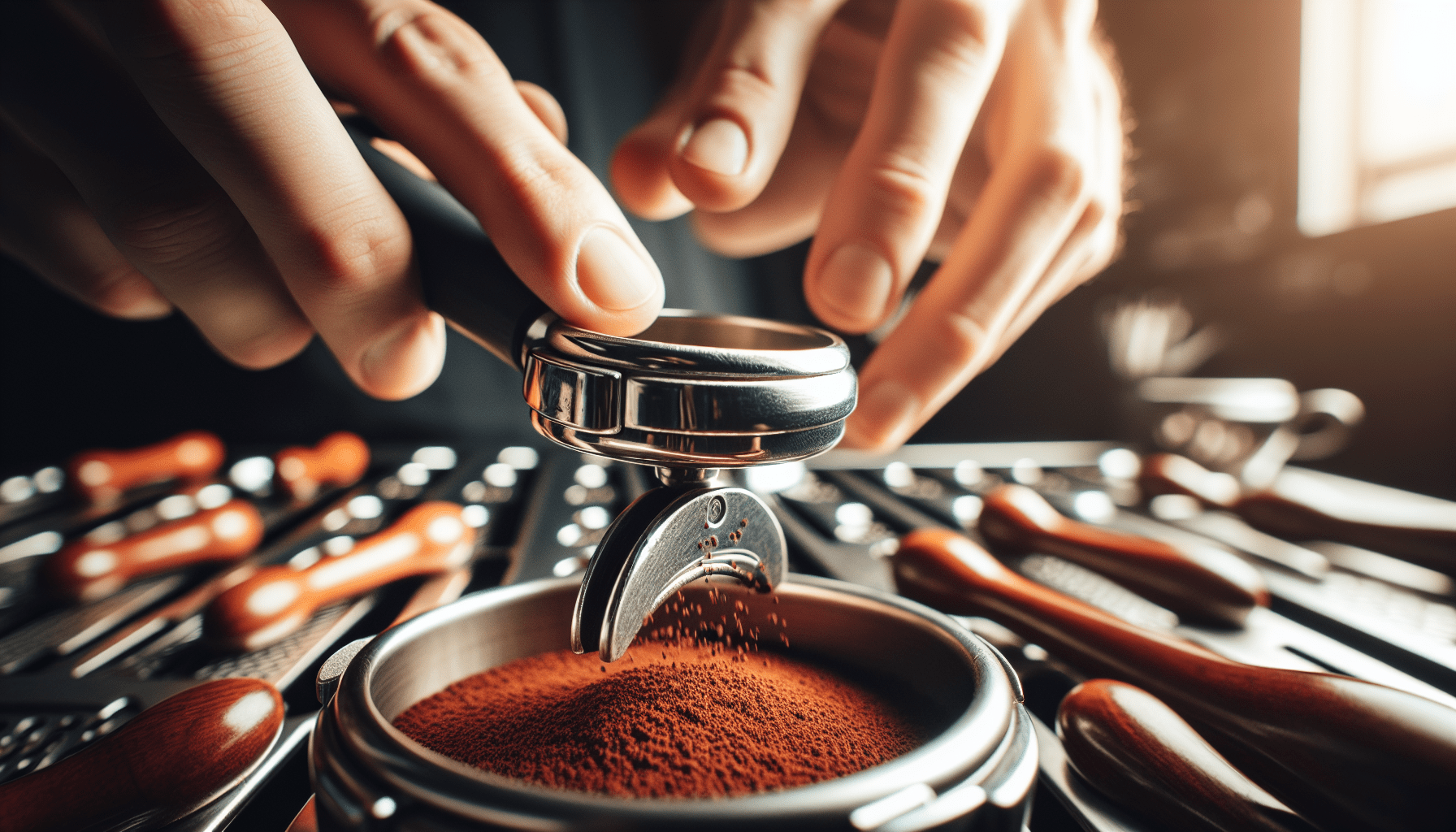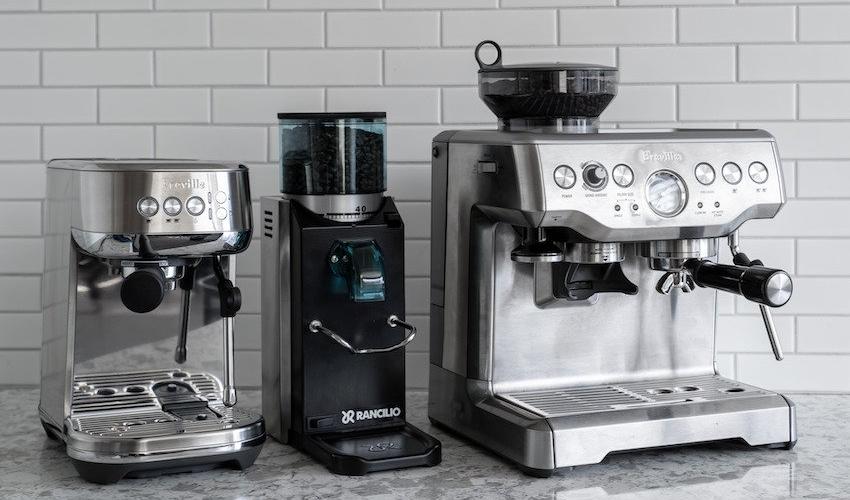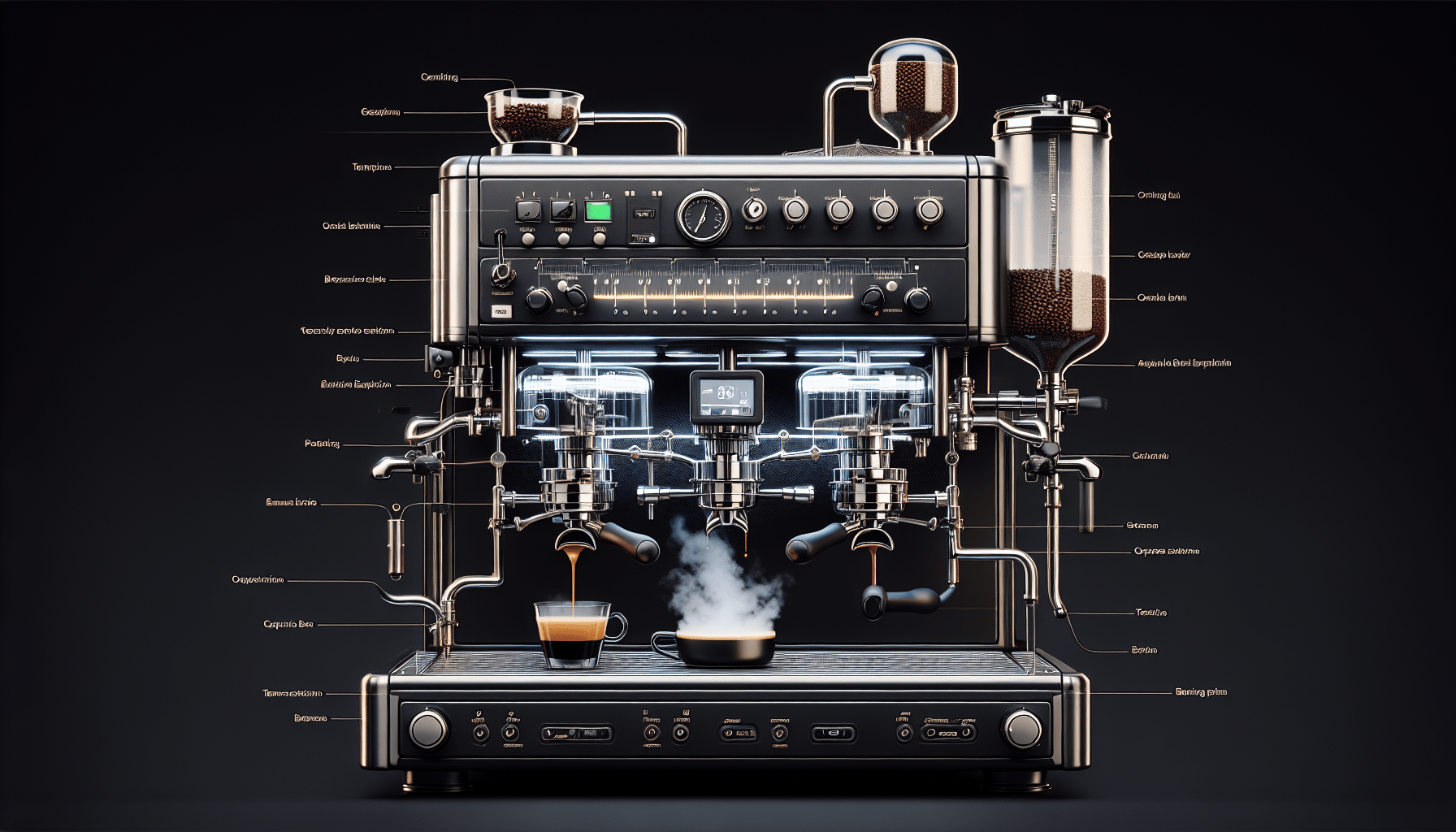Imagine being able to customize your perfect cup of espresso, tailored to your preferences and tastes. With a semi-automatic espresso machine, this dream becomes a reality as you gain control over every aspect of the brewing process. One of the key factors that contribute to the deliciousness of your espresso is the steam pressure and temperature. In this article, we will explore the ins and outs of adjusting the steam pressure and temperature on a semi-automatic espresso machine, allowing you to become a barista in your own home. So grab your favorite mug and prepare to embark on a journey of sensory pleasure and coffee mastery.
Understanding Steam Pressure
What is steam pressure?
Steam pressure refers to the force exerted by steam molecules against the walls of a container. In the context of espresso machines, steam pressure is the measure of the pressure at which steam is being generated inside the machine’s boiler.
Why is steam pressure important in espresso machines?
Steam pressure plays a crucial role in the espresso extraction process. It determines the speed at which water passes through the coffee grounds, affecting the extraction time and the flavors extracted from the coffee. The optimal steam pressure allows for the proper emulsification of oils in the coffee, resulting in a rich and flavorful shot of espresso.
How does steam pressure affect the brewing process?
The steam pressure in an espresso machine impacts the way water flows through the coffee grounds. If the steam pressure is too low, the water may pass through the grounds too quickly, resulting in an under-extracted and weak espresso. On the other hand, if the steam pressure is too high, the water may take too long to pass through the grounds, leading to over-extraction and a bitter taste.
Adjusting Steam Pressure on a Semi-Automatic Espresso Machine
Locating the steam pressure adjustment knob
On a semi-automatic espresso machine, the steam pressure adjustment knob is usually located on the machine’s control panel or near the steam wand. It is important to refer to the machine’s user manual for the specific location of the knob.
Understanding the different levels of steam pressure
Semi-automatic espresso machines typically provide a range of steam pressure levels that can be adjusted according to personal preference. These levels may be labeled on the machine as low, medium, and high, or represented as numerical values corresponding to specific pressure measurements.
Adjusting the steam pressure for optimal espresso extraction
To adjust the steam pressure on a semi-automatic espresso machine, start by purging any remaining steam from the boiler. Then, turn the steam pressure adjustment knob to the desired pressure level. It is recommended to begin with a lower pressure setting and gradually increase it until the desired extraction results are achieved. Experimenting with different pressure levels will help you find the sweet spot for your preferred espresso flavor.
Understanding Steam Temperature
What is steam temperature?
Steam temperature refers to the degree of heat or thermal energy contained in the steam produced by an espresso machine. It is a critical factor in achieving the desired milk frothing consistency and extracting the nuanced flavors from the coffee.
Why is steam temperature important in espresso machines?
The steam temperature is essential for creating the perfect microfoam for milk-based drinks. Achieving the ideal steam temperature allows for the delicate balance of heating and stretching the milk, resulting in a velvety and creamy texture. Additionally, the steam temperature affects the extraction process by influencing the rate at which the flavor compounds are extracted from the coffee grounds.
How does steam temperature affect the brewing process?
The steam temperature determines how effectively water interacts with the coffee grounds. When the temperature is too low, the extraction process may be incomplete, leading to a weak and watery espresso. Conversely, if the steam temperature is too high, it can scorch the coffee grounds, resulting in a bitter and burnt taste.
Adjusting Steam Temperature on a Semi-Automatic Espresso Machine
Locating the steam temperature adjustment knob
The steam temperature adjustment knob is commonly found on the control panel of a semi-automatic espresso machine. However, the exact location may vary depending on the model and brand. Checking the user manual or consulting the manufacturer’s website will provide specific instructions for locating the knob on your machine.
Understanding the different temperature settings
Semi-automatic espresso machines typically offer different temperature settings, indicated by labels such as low, medium, and high, or represented by numerical values. These settings allow users to select the ideal steam temperature range based on personal preferences and the specific type of coffee being brewed.
Adjusting the steam temperature for optimal milk frothing
To adjust the steam temperature, allow the machine to heat up and stabilize for a few minutes after turning it on. Then, turn the steam temperature adjustment knob to the desired temperature setting. For milk frothing, it is generally recommended to start with a lower temperature and gradually increase it until achieving the desired consistency.
The Relationship Between Pressure and Temperature
How do pressure and temperature interact in espresso machines?
Pressure and temperature in espresso machines are interconnected. As the water inside the boiler heats up, it creates steam, which generates pressure. The pressure level is directly proportional to the temperature inside the machine. This means that as the temperature increases, so does the steam pressure.
Finding the balance between steam pressure and temperature
Achieving the perfect balance between steam pressure and temperature is crucial for extracting the best flavors from the coffee and achieving optimal milk frothing results. It requires experimentation and adjusting both variables to find the ideal combination for your specific espresso preferences. Fine-tuning the pressure and temperature settings will lead to a harmonious extraction process and the creation of exceptional espresso beverages.
Troubleshooting Common Issues with Steam Pressure and Temperature
Steam pressure too low
If you find that the steam pressure is too low, it may lead to a weak espresso extraction or difficulties in frothing milk. To troubleshoot this issue, ensure that the water reservoir is adequately filled and the machine is properly heated. Additionally, check for any blockages or clogs in the steam wand and clean it if necessary. If the problem persists, it may be best to consult a professional technician.
Steam pressure too high
When the steam pressure is too high, the water may not flow evenly through the coffee grounds, resulting in an over-extracted and bitter taste. To alleviate this issue, try adjusting the pressure to a lower setting. If the problem persists, it is advisable to seek assistance from an experienced barista or contact the manufacturer for further guidance.
Steam temperature too low
If the steam temperature is too low, it can lead to difficulties in achieving the desired milk frothing consistency. Ensure that the machine has reached its optimal operating temperature by allowing it to heat up for an adequate amount of time. If the issue persists, the heating element or thermostat may require professional attention.
Steam temperature too high
When the steam temperature is too high, it can result in burnt or scorched coffee grounds, compromising the taste of the espresso. To address this issue, try reducing the temperature setting gradually until the desired extraction is achieved. If you are unable to control the temperature accurately, it is recommended to seek assistance from a professional espresso machine technician.
Ensuring Safety During Steam Pressure and Temperature Adjustments
Understanding the risks involved
Adjusting steam pressure and temperature on an espresso machine carries potential risks. High-pressure steam and hot water can cause severe burns if mishandled. It is essential to exercise caution and be mindful of the hazards involved when making any adjustments to the machine.
Proper precautions and safety measures
Before adjusting steam pressure or temperature, ensure that the machine is turned off and unplugged. Allow it to cool down for a sufficient period to minimize the risk of burns. When making adjustments, use appropriate protective gear, such as heat-resistant gloves, and be cautious of any steam or hot water that may be released during the process. If uncertain about any aspect of the adjustment, consult the machine’s user manual or seek guidance from a professional.
Regular Maintenance and Care for the Steam System
Cleaning the steam wand
Regularly cleaning the steam wand is essential to maintain optimal performance and prevent the build-up of milk residue. After each use, wipe the wand with a clean cloth or sponge to remove any milk residue. Periodically, use a descaling solution to remove any mineral deposits that may affect the wand’s functionality.
Decalcifying the boiler
The boiler should be decalcified regularly to remove mineral deposits that can accumulate over time. Follow the manufacturer’s instructions for the proper decalcification procedure, as it may vary depending on the machine model. Using a suitable descaling product and following the recommended frequency will help ensure the longevity and efficiency of the espresso machine.
Replacing worn-out gaskets and seals
Over time, gaskets and seals may wear out or become damaged, leading to leaks and compromising the machine’s performance. Regularly inspect them for signs of wear and tear, and replace them as needed. Consult the machine’s user manual or contact the manufacturer for guidance on the appropriate replacement parts and procedures.
Expert Tips for Fine-Tuning Steam Pressure and Temperature
Experimenting with different pressure and temperature settings
To achieve the desired espresso flavor profile, experiment with different steam pressure and temperature combinations. Start with the manufacturer’s suggested settings as a baseline, then gradually adjust them to suit your personal preferences. Keep a record of the adjustments made and the corresponding extraction results to identify the optimal settings for your espresso machine.
Observing the effects on espresso shots and milk frothing
As you make changes to the steam pressure and temperature, pay close attention to the resulting espresso shots and milk frothing quality. Observe the taste, color, and consistency of the espresso, as well as the texture and appearance of the milk foam. These visual and sensory cues will guide you in fine-tuning the pressure and temperature settings to achieve the desired outcome.
Seeking guidance from experienced baristas
If you encounter challenges or seek more in-depth knowledge about adjusting steam pressure and temperature, consider reaching out to experienced baristas for advice. They can provide valuable insights and share their expertise to help you unlock the full potential of your semi-automatic espresso machine.
Conclusion
Understanding steam pressure and temperature is vital for brewing exceptional espresso and achieving the perfect milk froth. Adjusting these variables on a semi-automatic espresso machine requires experimentation, observation, and adherence to safety precautions. By finding the optimal balance between steam pressure and temperature, while also conducting regular maintenance and care, you can create consistently excellent espresso beverages in the comfort of your own home. Remember to seek guidance from experts and enjoy the journey of exploring the world of espresso brewing.




